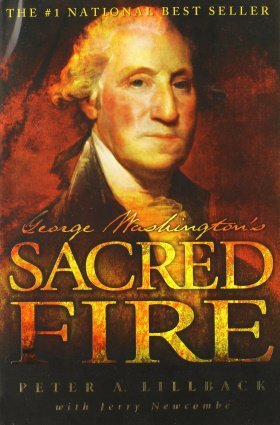EXAMPLES OF WASHINGTON’S WRITTEN PRAYERS
As a way of summarizing Washington’s many written prayers, we next consider several categories that illustrate the breadth of Washington’s interest in prayer.
1. For his family in a time of war.
To MRS. MARTHA CUSTIS, July 20, 1758.
Since that happy hour when we made our pledges to each other, my thoughts have been continually going to you as another Self. That an all-powerful Providence may keep us both in safety is the prayer of your ever faithful and affectionate friend.29
To JOHN AUGUSTINE WASHINGTON, New York, April 29, 1776.
I am very sorry to hear that my Sister was Indisposed with a sore Breast when you last wrote. I hope she is now recover’d of it, and that all your Family are well; that they may continue so, and that our once happy Country may escape the depredations and Calamities attending on War, is the fervent prayer of, dear Sir, your most affectionate brother. 30
2. A prayer for himself and his Army.
To LANDON CARTER, Morristown in New Jersey, April 15, 1777.
That the God of Armies may Incline the Hearts of my American Brethren to support, and bestow sufficient abilities on me to bring the present contest to a speedy and happy conclusion, thereby enabling me to sink into sweet retirement, and the full enjoyment of that Peace and happiness which will accompany a domestick Life, is the first wish, and most fervent prayer of my Soul.31
3. A Day of Thanksgiving as the New General of the American Army.
GENERAL ORDERS, Head Quarters, Cambridge, November 18, 1775.
The Honorable the Legislature of this Colony having thought fit to set apart Thursday the 23d of November Instant, as a day of public thanksgiving “to offer up our praises, and prayers to Almighty God, the Source and Benevolent Bestower of all good; That he would be pleased graciously to continue, to smile upon our Endeavours, to restore peace, preserve our Rights, and Privileges, to the latest posterity; prosper the American Arms, preserve and strengthen the Harmony of the United Colonies, and avert the Calamities of a civil war.” The General therefore commands that day to be observed with all the Solemnity directed by the Legislative Proclamation, and all Officers, Soldiers and others, are hereby directed, with the most unfeigned Devotion, to obey the same.32
4. Prayers for God’s blessings at the end of the war.
To THE MILITIA OFFICERS OF THE CITY AND LIBERTIES OF PHILADELPHIA,
Philadelphia, December 12, 1783.
While the various Scenes of the War, in which I have experienced the timely aid of the Militia of Philadelphia, recur to my mind, my ardent prayer ascends to Heaven that they may long enjoy the blessings of that Peace which has been obtained by the divine benediction on our common exertions.33
FAREWELL ORDERS TO THE ARMIES OF THE UNITED STATES,
Rock Hill, near Princeton, November 2, 1783.
To the various branches of the Army … he can only again offer in their behalf his recommendations to their grateful country, and his prayers to the God of Armies. May ample justice be done them here, and may the choicest of heaven’s favours, both here and hereafter, attend those who, under the devine auspices, have secured innumerable blessings for others; with these wishes, and this benediction, the Commander in Chief is about to retire from Service. The Curtain of seperation will soon be drawn, and the military scene to him will be closed for ever.34
5. A Prayer for the legislators of Massachusetts.
To THE MASSACHUSETTS SENATE AND HOUSE OF REPRESENTATIVES,
Head Quarters, August 10, 1783.
Impressed with sentiments of Gratitude for your benevolent Expressions for my personal Happiness and prosperity, I can make you no better return, than to pray, that Heaven, from the Stores of its Munificence, may shower its choisest blessings on you Gentlemen, and the People of the Commonwealth of Massachusetts, and to entreat that Our Liberties, now so happily established, may be continued in perfect Security, to the latest posterity. With Sentiments of high Veneration etc. (This reply to the Address of the Legislature was transmitted to Samuel Adams, then President of the Massachusetts Senate.)35
6. A Prayer for each of the thirteen newly independent states.
CIRCULAR TO THE STATES,
Head Quarters, Newburgh, June 8, 1783
I now make it my earnest prayer, that God would have you, and the State over which you preside, in his holy protection, that he would incline the hearts of the Citizens to cultivate a spirit of subordination and obedience to Government, to entertain a brotherly affection and love for one another, for their fellow Citizens of the United States at large, and particularly for their brethren who have served in the Field, and finally, that he would most graciously be pleased to dispose us all, to do Justice, to love mercy, and to demean ourselves with that Charity, humility and pacific temper of mind, which were the Characteristicks of the Divine Author of our blessed Religion, and without an humble imitation of whose example in these things, we can never hope to be a happy Nation.36
7. A Prayer for Princeton, and its historic college.
To THE INHABITANTS OF PRINCETON AND NEIGHBORHOOD, TOGETHER WITH THE PRESIDENT AND FACULTY OF THE COLLEGE,
Rocky Hill, August 25, 1783.
I now return you Gentlemen my thanks for your benevolent wishes, and make it my earnest prayer to Heaven, that every temporal and divine blessing may be bestowed on the Inhabitants of Princeton, on the neighbourhood, and on the President and Faculty of the College of New Jersey, and that the usefulness of this Institution in promoting the interests of Religion and Learning may be universally extended.37
8. A Prayer for New York City.
COMMONALTY OF THE CITY OF NEW YORK,
[April 10, 1785]
I pray that Heaven may bestow its choicest blessings on your City. That the devastations of War, in which you found it, may soon be without a trace. That a well regulated and benificial Commerce may enrichen your Citizens. And that, your State (at present the Seat of the Empire) may set such examples of wisdom and liberality, as shall have a tendency to strengthen and give permanency to the Union at home, and credit and respectability to it abroad. The accomplishment whereof is a remaining wish, and the primary object of all my desires.38
9. A Prayer for God’s providential blessings at the start of the new government.
To REVEREND SAMUEL LANGDON,
New York, September 28, 1789.
The man must be bad indeed who can look upon the events of the American Revolution without feeling the warmest gratitude towards the great Author of the Universe whose divine interposition was so frequently manifested in our behalf. And it is my earnest prayer that we may so conduct ourselves as to merit a continuance of those blessings with which we have hitherto been favored. I am etc.39

























